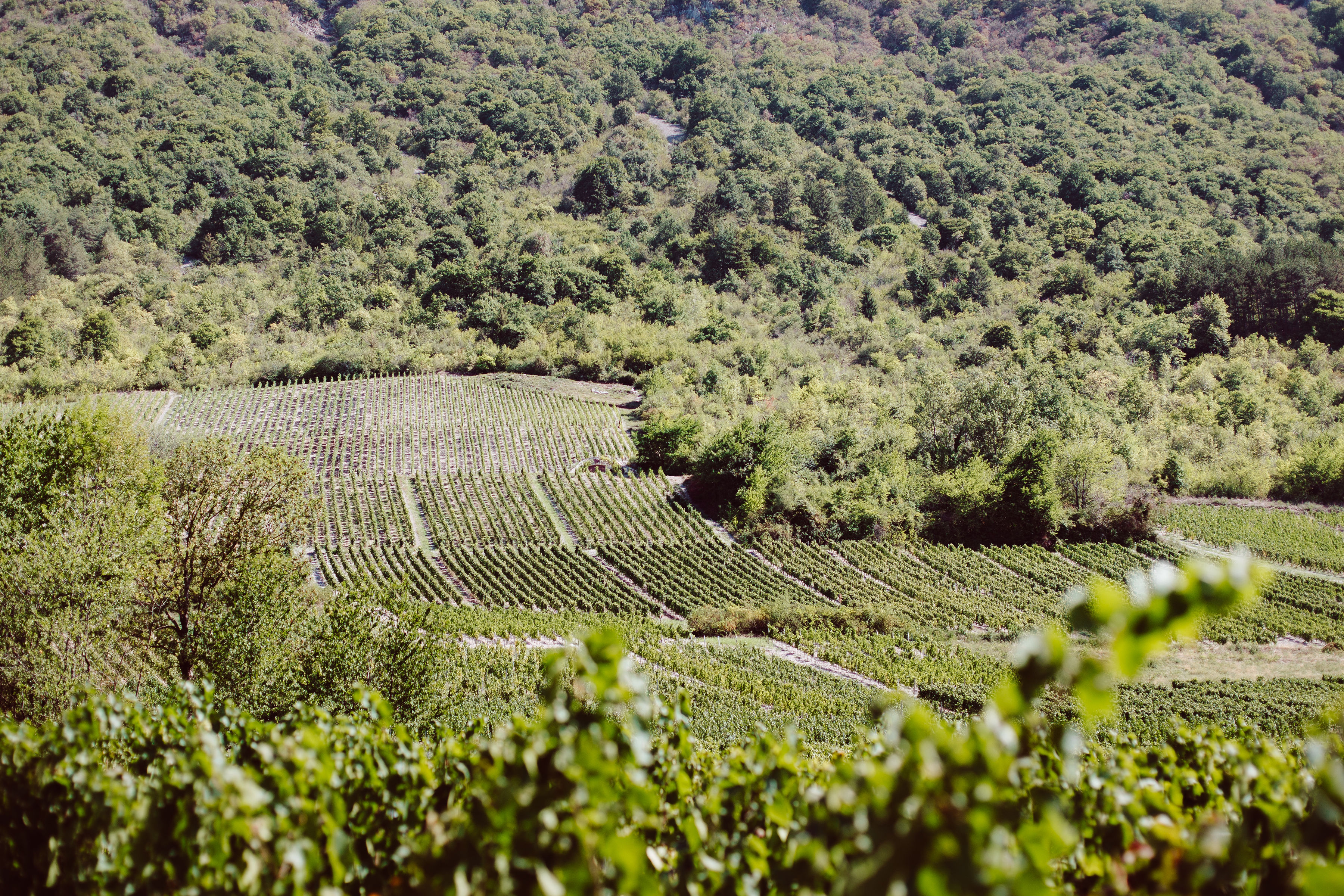
Provence
In Provence, a vineyard that sees life in pink
Under the sun of Provence, the vine has found a choice location. Sun, heat and mistral, all between the mountains and the Mediterranean: soils and climates are combined in an ideal cocktail, responsible for one of the oldest and most productive vineyards in France. Renowned for its fresh and generous rosé wines, the vineyards of Provence have that sweet holiday flavour that we so appreciate. It is also the source of red and white wines, sometimes unknown, often of high quality. From estate to château, discover a colourful vineyard, bathed in sunshine and joie de vivre.
General presentation of the vineyards of Provence
The vineyards of Provence are particularly extensive. In the South of France, it extends over the majority of the departments of Provence-Alpes-Côte d'Azur, namely the Bouches-du-Rhône, the Var, the Alpes-de-Haute-Provence and the Alpes-Maritimes.
Its 30,000 hectares are spread between Arles in the west, south of Avignon, and Nice in the east. From the banks of the Durance and Verdon rivers to the Mediterranean, via the slopes of the Alpilles, the Alps and many other mountain ranges, Provence offers a great diversity of landscapes, soils and climates. The result is a rich palette of wines offered in the 3 colours, with a large predominance of rosés.
The vineyards of Provence are also diversified. There are more than twenty main grape varieties. In red, the traditional grape varieties are grenache, cinsault, syrah, carignan, mourvèdre, cabernet-sauvignon and tibouren. Ugni blanc, clairette, vermentino (or rolle), sémillon and bourboulenc are the white grape varieties used mainly in Provence. To this list of grape varieties can be added other complementary varieties.
The appellations
The vineyards of Provence produce 9 AOCs:
- 4 regional appellations: Côtes de Provence, Coteaux d'Aix-en-Provence, Coteaux de Pierrevert and Coteaux Varois en Provence. These vineyards represent the vast majority of Provence's wine production.
- 5 communal appellations: Cassis, Bandol, Palette, Les Baux-de-Provence and Bellet. These AOCs concern a single commune or several communes.
Côtes de Provence
With more than 19,000 hectares, this is the largest appellation of the Provencal vineyards; it alone represents three quarters of the total production of the region. It covers more than 80 communes in the Var and Bouches-du-Rhône and makes a small incursion into the Alpes-Maritimes. The AOC Côtes de Provence offers a great variety of wines. Rosés ensure the reputation of the appellation and constitute 80% of the local wines.
The AOC is enriched by 4 geographical denominations:
- Côtes de Provence Sainte-Victoire
- Côtes de Provence Fréjus
- Côtes de Provence La Londe
- Côtes de Provence Pierrefeu
Coteaux d'Aix-en-Provence
Between Aix-en-Provence and Marseille, this appellation area of more than 4,000 hectares is also largely devoted to rosé wines. Grenache, Cinsault and Syrah are the main grape varieties of the AOC Aix-en-Provence, which also produces red and some white wines.
Coteaux des Baux-de-Provence
To the south of Saint-Rémy-de-Provence, the Château des Baux-de-Provence dominates the Alpilles from its rocky promontory and the vines that spread out on its steep slopes. This AOC covers about 250 hectares and is particularly renowned for its red wines. Grenache, Mourvèdre, Cinsault and Syrah are the main grape varieties grown here. However, no white wine can benefit from this appellation.
Coteaux Varois in Provence
It is at the foot of the Sainte-Baume, in the vicinity of Brignoles, that this Var AOC and its 2,250 hectares of vines are spread out. It produces mainly rosé and red wines with a very marked Provencal personality.
Coteaux de Pierrevert
This is a vineyard of just over 400 hectares, located in the north of the region, around Manosque and Forcalquier, in the Alpes-de-Haute-Provence. This high-altitude vineyard uses the same grape varieties as the rest of Provence; however, red wines dominate production, followed by rosé wines and, in small quantities, white wines.
Bandol
This appellation of some 1,550 hectares flourishes in the Var, on the Mediterranean coast, between Cassis and Toulon. It covers 8 communes: Bandol, of course, as well as Le Beausset, La Cadière d'Azur, Evenos, Ollioules, Sanary-sur-Mer, Le Castellet and Saint-Cyr-sur-Mer. Cultivated in restanques, these traditional terraces of Provence, the vines allow the production of wines in the 3 colours with an international reputation.
Bellet
This small, almost confidential appellation of about fifty hectares spreads its vineyards over the heights of Nice, with the sea and the mountains as its horizon. This AOC has wines in all three colours; red wines are in the majority.
Cassis
In a postcard setting, between the calanques and Cap Canaille, the Cassis vineyard offers particularly sought-after white wines. Cultivated from clairette and marsanne, they are often ranked among the best whites of the region. The Cassis AOC also owes its reputation to its rosé wines produced from grenache, carignan, cinsault, carignan and mourvèdre. The red wine of this AOC is also well known.
Palette
This appellation takes its name from a hamlet located south-east of Aix-en-Provence. On 46 hectares, white wines are produced, often sought after for their great quality. At the foot of the Sainte-Victoire so dear to Paul Cézanne, this vineyard also produces red and rosé wines.
Appellations
Le vignoble

